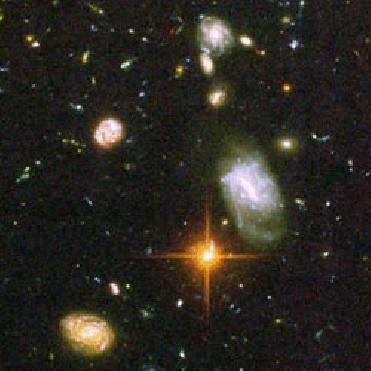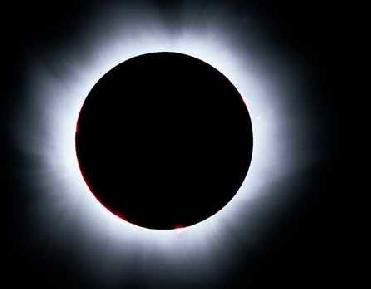
Distant galaxies appear as faint patches of light in this photograph taken by the Hubble Space Telescope. Image credit: NASA/ESA/S. Beckwith (STScl) and the HUDF Team.
BERLIN (BNS): The latest image released by the European Organisation for Astronomical Research in the Southern Hemisphere (ESO) is a treat for all those who may have wondered what it might be to dive into a pool of millions of distant galaxies of different shapes and coolers.
Obtained in part with the help of Very Large Telescope, the image is the deepest ground-based U-band image of the Universe ever obtained. It contains more than 27 million pixels and is the result of 55 hours of observations with the Visible Imaging Multi-Object Spectrograph (VIMOS) instrument.
This uniquely beautiful patchwork image, with its myriad of brightly coloured galaxies, shows the Chandra Deep Field South (CDF-S), arguably the most observed and best studied region in the entire sky.
The CDF-S is one of the two regions selected as part of the Great Observatories Origins Deep Survey (GOODS), an effort of the worldwide astronomical community that unites the deepest observations from ground and space-based facilities at all wavelengths from X-ray to radio. Its primary purpose is to provide astronomers with the most sensitive census of the distant Universe to assist in their study of the formation and evolution of galaxies.
The new image released by ESO combines data obtained with the VIMOS instrument in the U- and R-bands, as well as data obtained in the B-band with the Wide-Field Imager (WFI) attached to the 2.2 m MPG/ESO telescope at La Silla, in the framework of the GABODS survey.
The newly released U-band image � the result of 40 hours of staring at the same region of sky and�made ready by the GOODS team � is the deepest image ever taken from the ground in this wavelength domain. At these depths, the sky is almost completely covered by galaxies and each one, like our own galaxy -- the Milky Way, is home to hundreds of billions of stars.
Galaxies were detected that are a billion times fainter than the unaided eye can see and over a range of colours not directly observable by the eye. This deep image has been essential to the discovery of a large number of new galaxies which are so far away that they are seen as they were when the Universe was only two billion years old.
In this sea of galaxies � or island universes as they are sometimes called � only a very few stars belonging to the Milky Way are seen. One of them is so close that it moves very fast in the sky.
This 'high proper motion star' is visible to the left of the second brightest star in the image. It appears as a funny elongated rainbow because the star moved while the data was being taken in different filters over several years
 Next Article
Next Article













The Indian Air Force, in its flight trials evaluation report submitted before the Defence Ministry l..
view articleAn insight into the Medium Multi-Role Combat Aircraft competition...
view articleSky enthusiasts can now spot the International Space Station (ISS) commanded by Indian-American astr..
view article